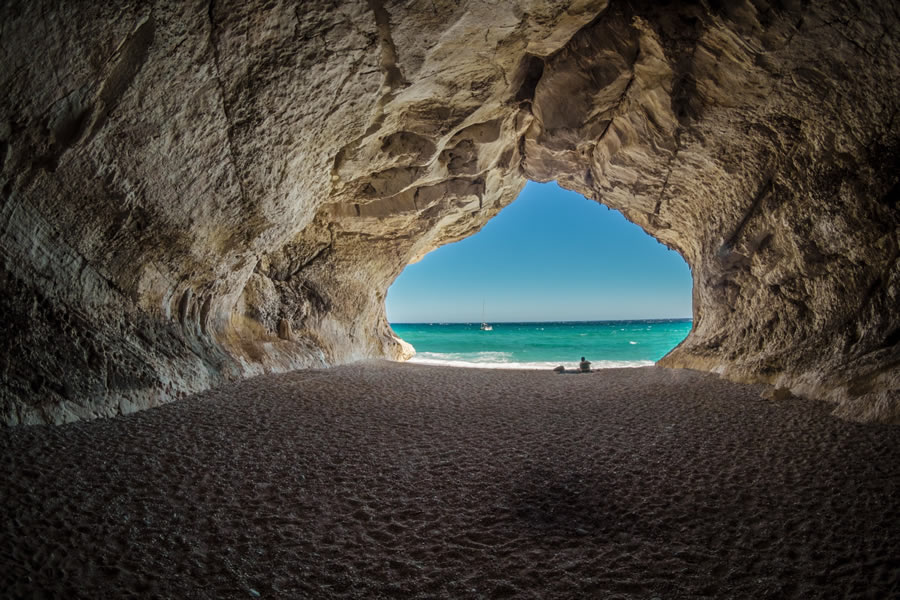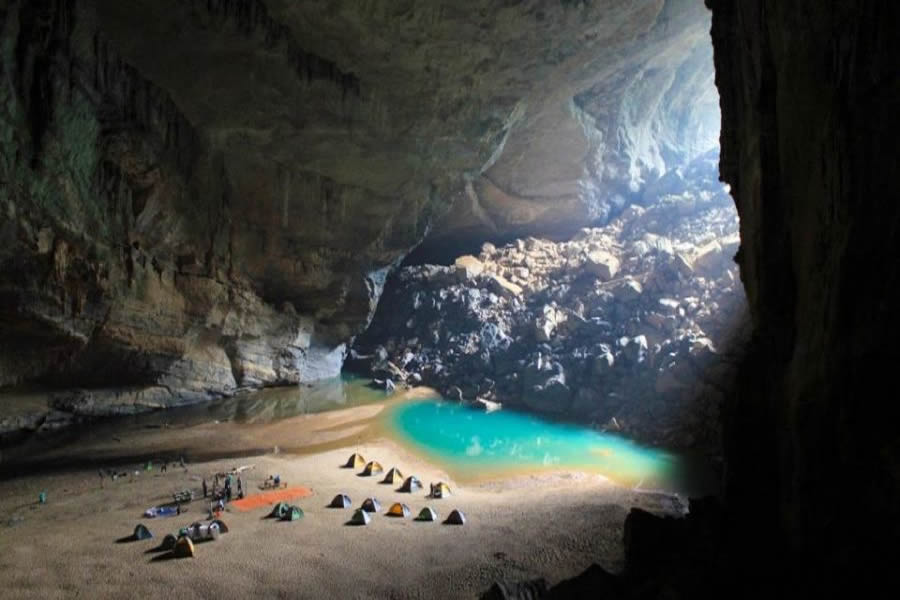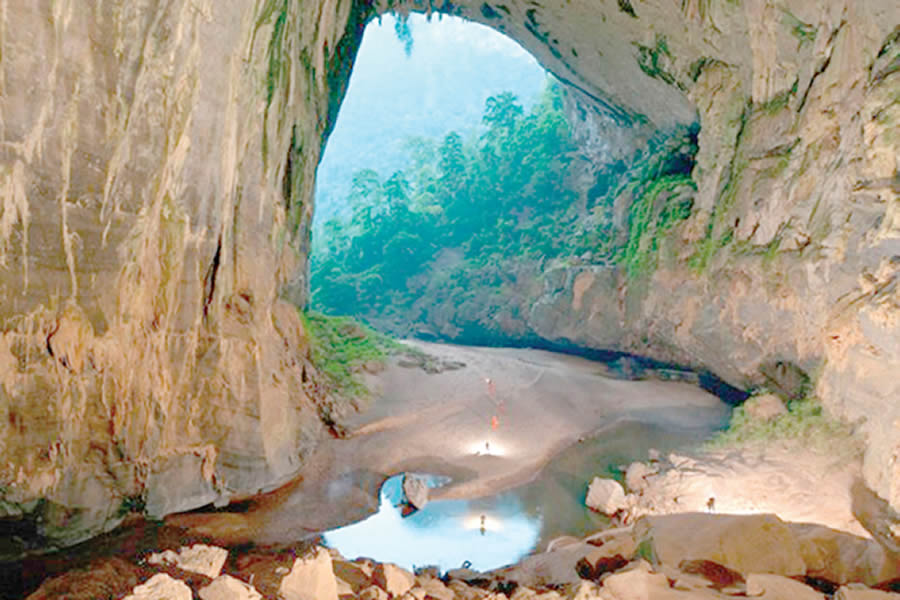Ogbunike Cave, which lies within the tropical rain forest belt, is situated in a valley behind the Ogba hills in which lies St. Monica College, Ogbunike. Descending into the valley where the caves are located is a lengthy walkway made up of about 317 steps said to have been constructed by the Anambra State government in the mid 90s.

At the end of the walkway is an open space used as a reception point, where visitors are by tradition expected to remove their shoes.The main cave consists of a massive structure with a big open chamber of about 5m high, 10m wide and 30m long entrance. There are ten tunnels at the main chamber leading to different directions. Within the tunnels are big chambers and other tunnels of varying lengths, some of which are inter connected.
The caves are occupied by a large colony of bats of various sizes. There are streams and body of water at various places. A stream flows out from one of the tunnels into a rapidly flowing river (River Nkissa). At the meeting point of the river and the stream, one can feel the warm water from the caves and the cold river water.
Beside this portion of the river is a tableland of about 5 X 5 square meters used as a relaxation spot by visitors to the caves. The immediate environment of the caves up to about 200 metres radius is a thick tropical rainforest type of vegetation. Among the fauna of the site are deer, antelope, grass cutter, porcupine, rabbit, alligator, snakes and frogs. Others are fish, crabs and birds.

Ogbunike Cave is associated with living traditions and has been used by the people for many centuries; the site still retains its historical and spiritual significance. The biodiversity of the site has remained almost in tact. The integrity of the site can be attested to by the presence of the primary forests around the caves.
The Nkisa River flows by the side of the caves into which the water that drains from the caves empties itself. The entire site is of undulating hills and valleys, which stretch across other communities and farmlands. The site has sufficient boundaries (20 hectares) to protect its values from direct effects of human encroachment.
In 2007, the National Commission for Museums and Monuments submitted Ogbunike Cave to UNESCO, under mixed category, to be considered as a World Heritage Centre. For now, the Cave is still on the tentative list.
The Ogbunike caves, described by geologists as millions of years old, are the yet undiscovered cash cow of Anambra. One of the cave tunnels exit at the Ogbunike Town Hall, about six kilometres away from the cave proper, and another tunnel, according to folklore, terminates at Obosi in Idemili North Local Government Area.

The much talked about employment generation will find ready expression in the cave, if a perimeter fence was built to secure the cave grounds with a gate to be manned by revenue staff, working shifts.
The gate will serve as entry and exit point for thousands of individuals, groups, and bus-loads of knowledge-seeking pupils, students, researchers and excursion groups which daily stream into Ogbunike to feast their eyes on the wonders of this God-given gift to Anambra. The inscriptions, carvings, drawings, signatures and etchings on the cave walls over the years bear testimony to the thousands of visitors the cave has played host to over the centuries.
The Anambra State Ministry of Commerce and Industry can partition and allocate the grounds in square meters to restaurant owners, fast food and drink retailers for a fee renewable annually. Ground rents can also be charged sellers of local delicacies like “Okpa” and local drinks like “ngwo” and “iti”.For those who wish to pass nights and weekends in the cave to further savour its delights, the Anambra State Government needs only construct safari-type pre-fabricated bungalows with thatched roofs to harmonize with the cave locale and eco-system. The interior of these bungalows can be plumbed, wired and tiled for modern comfort.
Banks in Anambra
Brief History of Anambra
Business and Economy
General and Teaching Hospitals
Hotels and Guest Houses
Anambra State Ministries Agencies and Parastatals
Police Stations
Popular Markets
Restaurants, Bars and Night Clubs
Shopping Malls
Traditional Rulers
FESTIVALS and CARNIVALS
Alo Mmo New Yam Festival
Igu Aro Festival
Ijele Masquarade Festival
Ime Ogbe Festival
Mmanwu Festival
Ofala Festival
Uzo Iyi Festival
TOURIST ATTARCTIONS
Agulu Lake
Igbo Ukwu Museum
Ogbunike Caves
Rojenny Tourist Village Oba
Connect With Us
 |
 |
 |
 |
